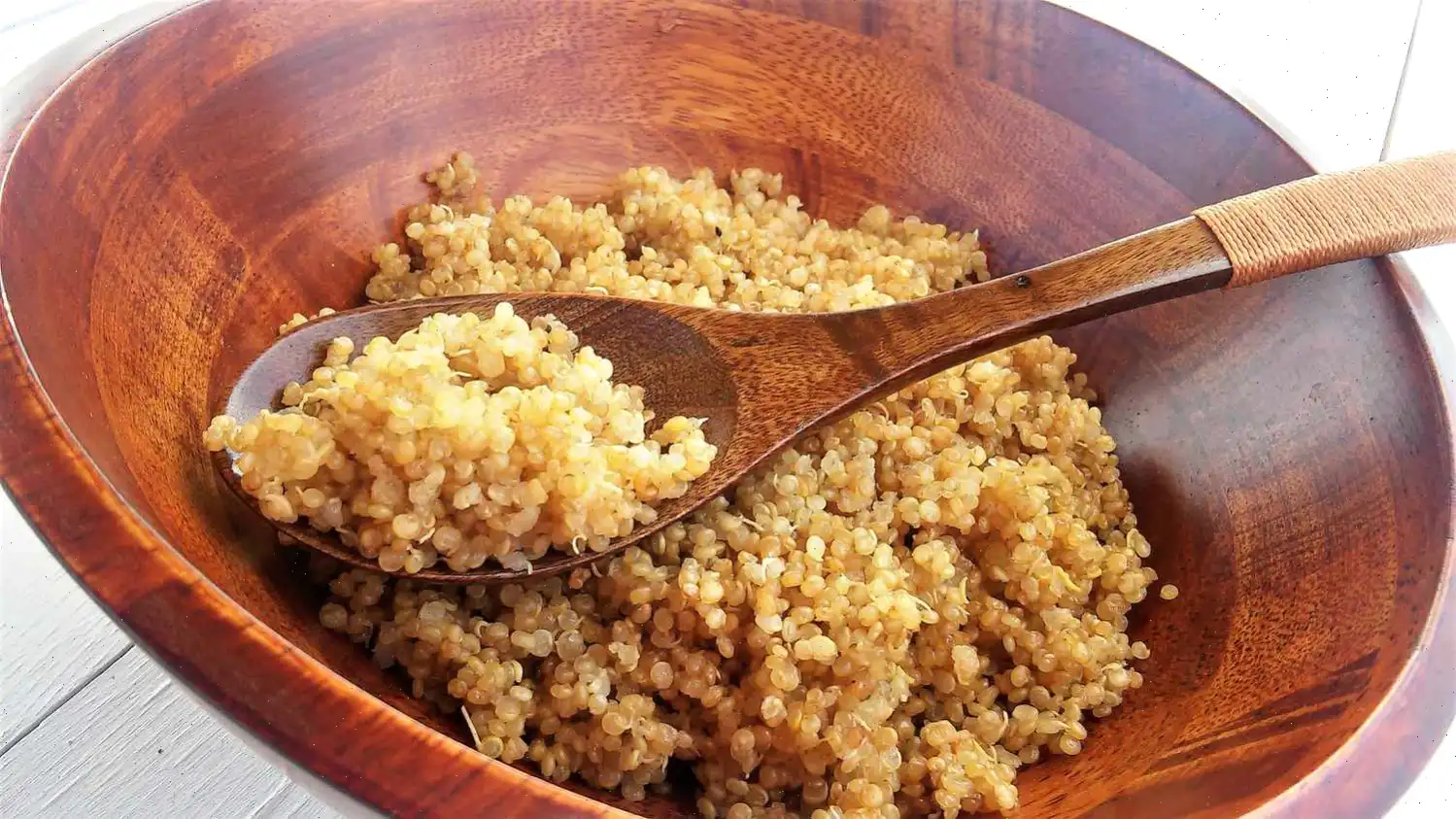
Pork Roast and Sauerkraut Recipe
This hearty dish combines tender pork, kielbasa sausage, and tangy sauerkraut for a perfect comforting meal. Serve with a side of potatoes or crusty bread for a full feast.
Ingredients
- 1 tablespoon bacon drippings
- 1 cup minced onion
- 1 large red apple, diced
- 1 teaspoon caraway seeds
- 2 pounds sauerkraut, drained and rinsed
- cup dry white wine
- cup chicken stock
- 2 tablespoons brown sugar
- 2 pounds boneless pork loin roast
- 1 pound kielbasa sausage, cut into 3-inch pieces
Directions
- In a Dutch oven, heat the bacon drippings over medium heat.
- Add the minced onion and cook, stirring occasionally, until it becomes soft and translucent, about 5 minutes.
- Stir in the diced apple and caraway seeds. Continue to cook for an additional 3 minutes, or until the apple softens slightly.
- Add the sauerkraut to the pot and stir to combine with the apple and onions.
- In a separate bowl, whisk together the white wine, chicken stock, and brown sugar. Pour this mixture over the sauerkraut mixture in the Dutch oven.
- Transfer the pork roast into a slow cooker and pour the sauerkraut mixture over the top of the pork.
- Set the slow cooker to Low and cook for 6 to 8 hours, or until the pork is tender and easily shreds with a fork.
- Once the pork is cooked, add the kielbasa sausage to the slow cooker. Continue cooking for another 15 to 20 minutes, until the sausage is heated through.
Nutrition Facts (per serving)
| Calories | 25g Fat | 16g Carbs | 27g Protein |
|---|---|---|---|
| 406 | 32% | 6% | 53% |
Other Nutritional Info:
- Saturated Fat: 9g (44% DV)
- Cholesterol: 91mg (30% DV)
- Sodium: 1341mg (58% DV)
- Dietary Fiber: 4g (15% DV)
- Total Sugars: 10g
- Vitamin C: 20mg (22% DV)
- Calcium: 70mg (5% DV)
- Iron: 3mg (17% DV)
- Potassium: 692mg (15% DV)
* Percent Daily Values are based on a 2,000 calorie diet. Your daily values may be higher or lower depending on your calorie needs.

This traditional dish, combining tender pork roast, tangy sauerkraut, and savory kielbasa, is a culinary classic often enjoyed in various parts of the world. The recipe, known for its hearty and flavorful profile, offers a perfect balance of savory and slightly sweet, making it an excellent comfort food for many occasions. Heres a deep dive into its history, regional uniqueness, and more.
History of Pork Roast and Sauerkraut
The dish has its roots in European, particularly German, cuisine. The use of pork and sauerkraut dates back centuries in Central and Eastern Europe, where pork was a common meat due to its availability and versatility. Sauerkraut, a fermented cabbage, became a staple because of its ability to preserve cabbage through the harsh winter months. The combination of these two ingredients grew in popularity as a practical, nourishing meal during long winters.
In Germany, the dish is often linked with New Year's celebrations, symbolizing good luck and prosperity. The tradition of serving pork and sauerkraut on New Year's Day is believed to bring a bountiful year ahead, as pigs root forward, unlike chickens, which scratch backward. The dish was brought to the United States by German immigrants in the 19th century, where it became a staple in many households, particularly in regions with large German populations like Pennsylvania and the Midwest.
Regional Features and Variations
While the basic elements of pork roast and sauerkraut remain constant, the preparation and variations differ across regions. In Germany, the dish is often prepared with a simple seasoning of salt, pepper, and juniper berries. However, in the United States, it is common to see the inclusion of additional flavors, such as apples, brown sugar, and caraway seeds, which add a touch of sweetness and complexity to the dish.
In addition to the main components of pork and sauerkraut, different regions may include sausages like kielbasa or other local varieties, enriching the flavor. For example, in the Midwest, its not uncommon to add smoked sausages alongside the pork for an extra layer of smoky goodness. In some cases, the dish might be served with mashed potatoes or boiled potatoes, allowing the sauce to be soaked up for an even heartier meal.
Differences from Similar Dishes
Though the combination of pork and sauerkraut appears in various dishes, such as the Polish "bigos" or the Czech "vyprazdnen," the distinctive feature of this particular recipe lies in the slow-cooking method. The pork roast is cooked low and slow, ensuring that the meat becomes tender and falls apart effortlessly when pulled with a fork, while the sauerkraut absorbs all the savory flavors from the pork and spices.
In contrast, dishes like "bigos" are often made with a mixture of different meats and are stewed for a shorter period, with the focus more on the variety of meats and the tangy, fermented flavor of the sauerkraut. Additionally, bigos often includes mushrooms and a variety of herbs, giving it a slightly more complex and earthy flavor profile.
Where is Pork Roast and Sauerkraut Usually Served?
This dish is commonly served during holidays, family gatherings, and especially New Year's Day in German and Central European cultures. In the United States, its often seen on the dinner table during fall and winter months, as it is a warming, filling dish. It is also a favorite in certain regional celebrations, especially in areas with strong German or Eastern European immigrant communities. The hearty, savory nature of the meal makes it a perfect choice for feeding large groups of people.
Interesting Facts
- The tradition of eating pork and sauerkraut for New Years Day is thought to bring good luck and prosperity for the coming year.
- Pork is a symbol of progress and good fortune, as pigs root forward when foraging, unlike chickens, which scratch backward.
- Sauerkraut, due to its fermentation process, is rich in probiotics and was historically used for its health benefits, especially in preventing scurvy during long voyages.
- The dish can be prepared in various ways, with some variations using beer or wine to cook the pork, adding a depth of flavor to the sauerkraut mixture.
Overall, Pork Roast and Sauerkraut is not just a dish; its a symbol of culture, tradition, and good fortune, with flavors that have stood the test of time and continue to delight palates around the world.
FAQ about Pork Roast and Sauerkraut Recipe
Comments
Victoria Torres
12/26/2023 11:40:37 PM
Great recipe! I used a pork loin roast and cooked it for 8 hours, resulting in perfectly shredded meat. The mennonite farmers sausage I added turned out incredibly tender. Cooking the sausage along with the roast from the start was a game-changer.
Larry Nelson
01/16/2024 09:17:22 PM
My family shares a similar New Year's tradition, but we don't usually include kielbasa. The only adjustment I made was to drain the sauerkraut without rinsing it - I prefer it tangy! This dish was fantastic and incredibly simple to make in the slow cooker. I plan to include kielbasa next time for an added touch.
Frank Collins
10/28/2024 02:21:53 PM
I left out the caraway seeds since I'm not a fan of them, and swapped the wine for beer. The result was absolutely amazing!
Gary Nelson
11/15/2024 12:37:58 PM
I absolutely adore this recipe! It's simply perfect!
Jose Martinez
09/29/2022 07:47:54 AM
The pork was incredibly tender and flavorful, but for those who enjoy the tanginess of sauerkraut, this recipe may be lacking in that aspect.
Ashley Campbell
11/06/2022 10:22:01 PM
The meal was overall enjoyable, with all dishes being delicious except for the pork, which turned out to be quite dry. However, upon revisiting the recipe, I realized that I forgot to add chicken broth. I will definitely give it another try in about a month or so.
Michael Robinson
12/05/2024 06:58:43 AM
I have made this recipe several times, and it always turns out tender and very flavorful.
Katherine Lopez
09/07/2023 08:41:04 PM
The meal was enjoyable. I decided to substitute mashed potatoes for roasted potatoes.








